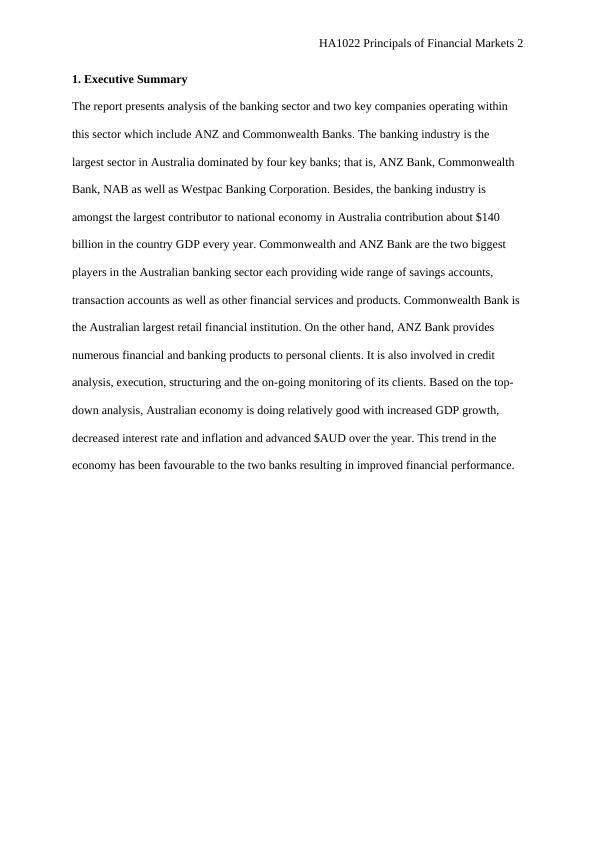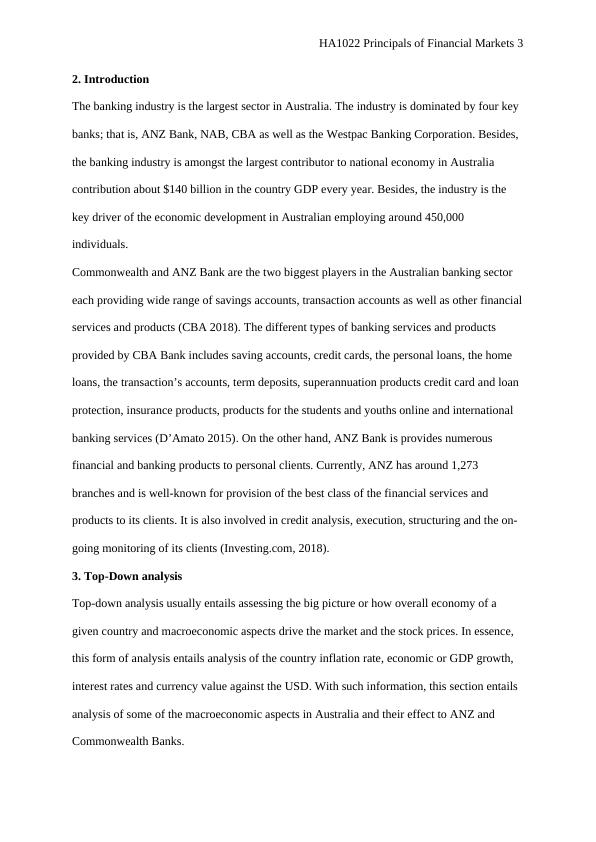Analysis of ANZ and Commonwealth Banks in the Australian Banking Sector
11 Pages2869 Words135 Views
Added on 2023-06-06
About This Document
The report presents analysis of the banking sector and two key companies operating within this sector which include ANZ and Commonwealth Banks. The banking industry is the largest sector in Australia dominated by four key banks; that is, ANZ Bank, Commonwealth Bank, NAB as well as Westpac Banking Corporation. Besides, the banking industry is amongst the largest contributor to national economy in Australia contribution about $140 billion in the country GDP every year. Commonwealth and ANZ Bank are the two biggest players in the Australian banking sector each providing wide range of savings accounts, transaction accounts as well as other financial services and products.
Analysis of ANZ and Commonwealth Banks in the Australian Banking Sector
Added on 2023-06-06
ShareRelated Documents
End of preview
Want to access all the pages? Upload your documents or become a member.
Analysis of Australian Banking Industry and Two Banks: NAB and Westpac
|12
|3580
|437
Analysis of ANZ and BOQ Financial Performance in Australian Banking Industry
|15
|3600
|316
Marketing Management Report for ANZ Bank: Potential Market Analysis for Home Loans in Richmond, Melbourne
|17
|3767
|449
Assessment of the Australian Government’s Four Pillars Policy in the Banking Industry
|10
|3006
|359
Impact of Royal Commission on Banking Sector and Australian Economy
|14
|872
|94
Analysis of Australian Banking Sector: A Comparison of Bank of Queensland and Westpac Banking Corp
|16
|3741
|481




